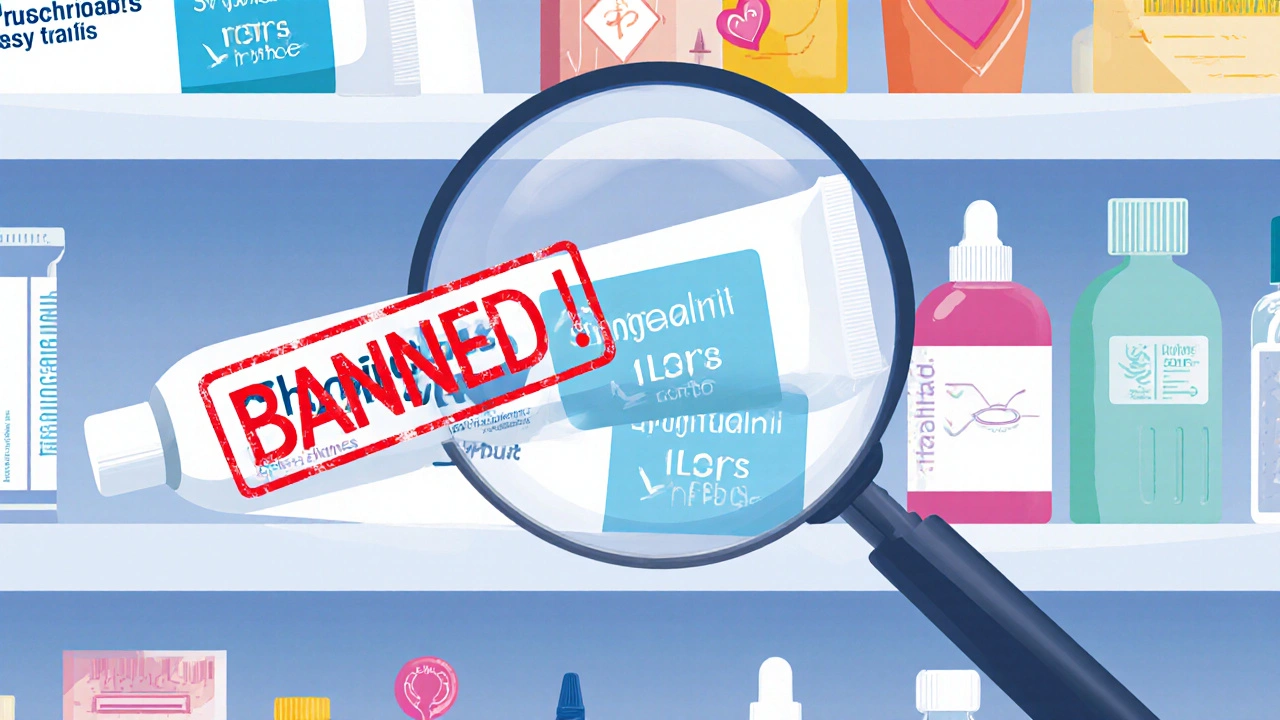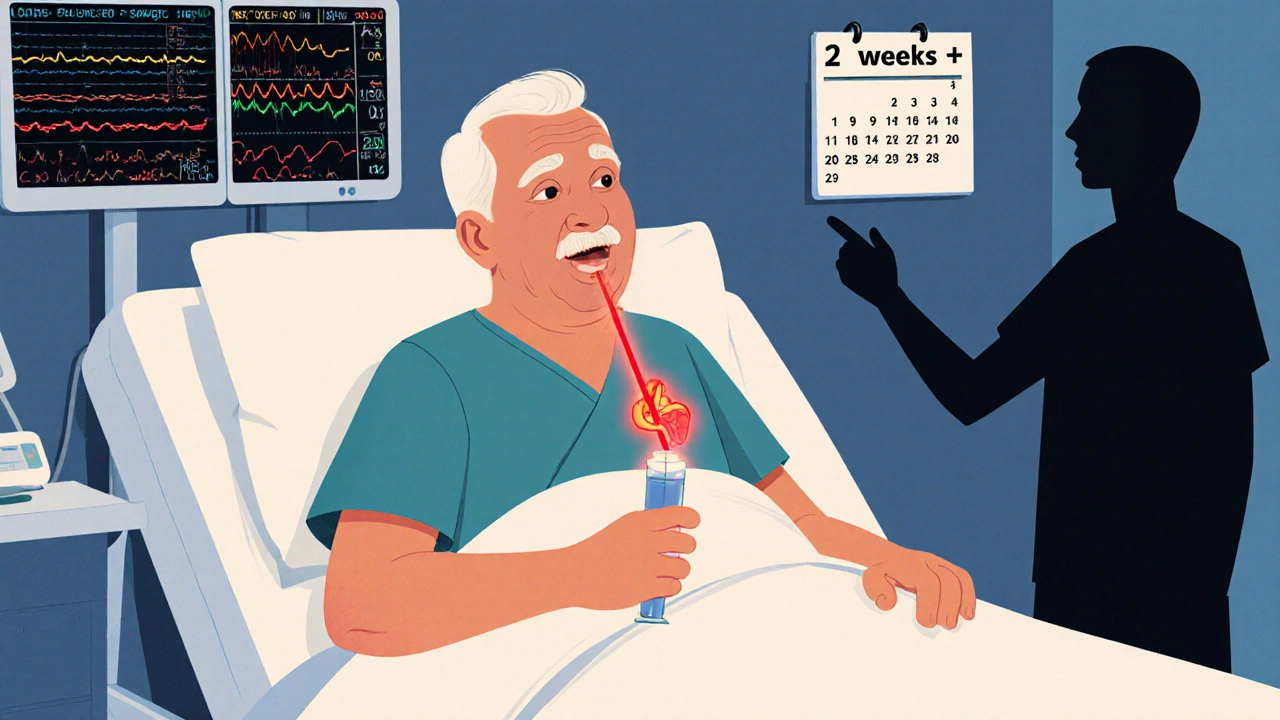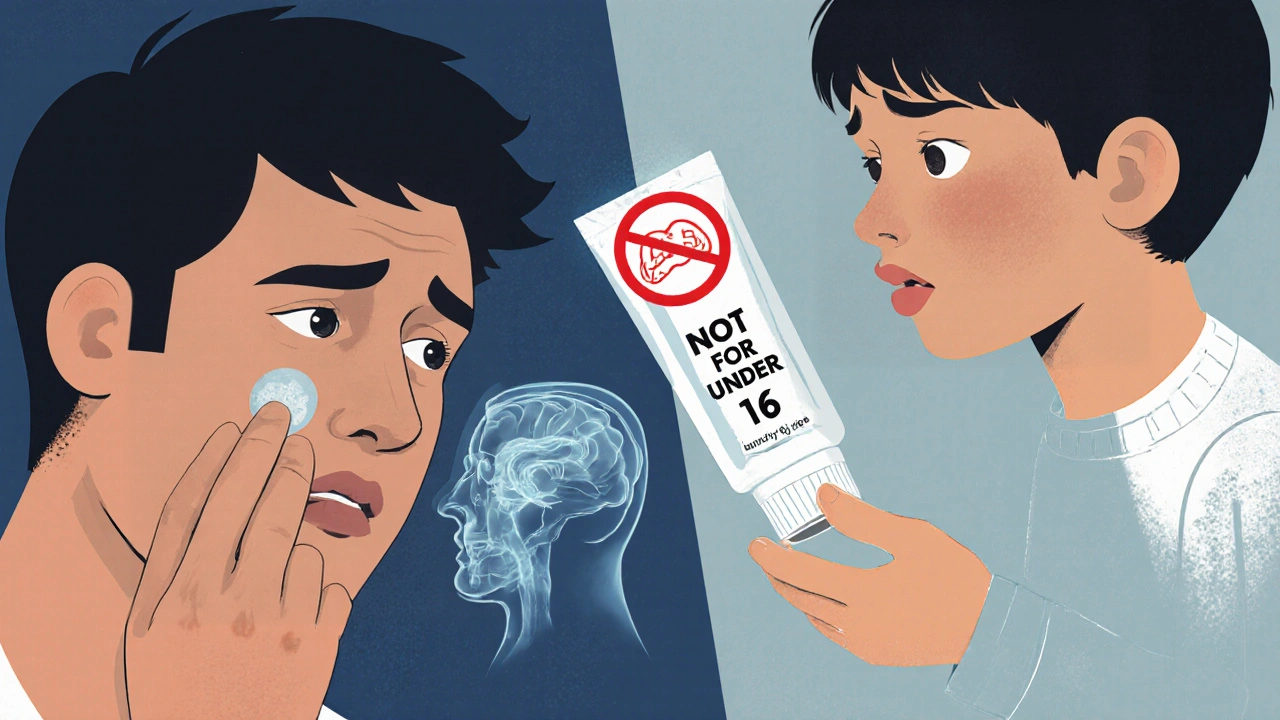Choline salicylate lignocaine isn’t a name you hear every day, but if you’ve ever used a mouth ulcer gel or a throat spray for quick pain relief, you’ve likely encountered it. It’s a combo drug - two active ingredients working together to numb pain and reduce inflammation. But while it works fast and feels like magic on a sore mouth, it’s not risk-free. People use it without thinking, especially for kids or during pregnancy. That’s where things get dangerous.
What Exactly Is Choline Salicylate Lignocaine?
This isn’t one drug. It’s two: choline salicylate is a non-steroidal anti-inflammatory (NSAID) that reduces swelling and pain, and lignocaine (also called lidocaine) is a local anesthetic that blocks nerve signals. Together, they’re packed into gels, sprays, or lozenges for quick, targeted relief - mostly in the mouth or throat.
Think of it like this: choline salicylate handles the redness and ache from canker sores or sore throats, while lignocaine shuts off the pain signal before it even reaches your brain. That’s why you feel numb within seconds. It’s effective - but only for surface-level issues. It doesn’t heal anything. It just hides the pain.
This combo is common in over-the-counter products like Orabase, Bonjela, and some generic throat sprays sold in pharmacies. In New Zealand, Australia, and the UK, you can buy it without a prescription. But that doesn’t mean it’s safe for everyone.
Who Should Avoid It?
There are three big groups who shouldn’t use choline salicylate lignocaine without talking to a doctor first.
- Children under 16 - Choline salicylate is related to aspirin. In kids, aspirin-like drugs can trigger Reye’s syndrome, a rare but deadly condition that causes swelling in the liver and brain. Even a small amount applied to the gums can be absorbed into the bloodstream. The UK’s Medicines and Healthcare products Regulatory Agency (MHRA) banned choline salicylate in children under 16 in 2018. New Zealand’s Medsafe followed suit. Yet, some older tubes still sit in medicine cabinets.
- Pregnant or breastfeeding women - NSAIDs like choline salicylate can affect fetal circulation, especially in the third trimester. Lignocaine crosses the placenta too. While occasional use under medical supervision might be okay, self-treating mouth ulcers with this product isn’t worth the risk. There are safer alternatives like saline rinses or paracetamol-based gels.
- People with liver or kidney disease - Both ingredients are processed by the liver and kidneys. If those organs are already struggling, even normal doses can build up to toxic levels. A 2023 study in the Journal of Clinical Pharmacy and Therapeutics found that patients with chronic kidney disease had 3x higher blood levels of lignocaine after standard use compared to healthy adults.
Common Side Effects - And When to Worry
Most people use this product without issues. But side effects happen - and they’re not always mild.
- Mild: Temporary numbness, tingling, or a bitter taste. These are normal and fade in minutes.
- Uncommon: Dry mouth, irritation at the application site, or allergic reactions like rash or swelling. Stop using it if this happens.
- Severe (rare but serious): Dizziness, ringing in the ears, confusion, blurred vision, or irregular heartbeat. These are signs of lignocaine toxicity. If you feel this way after using the product, call emergency services. Too much lignocaine can slow your heart or stop your breathing.
One real case from Auckland in 2024 involved a 72-year-old man who applied the gel to his gums every 2 hours for three days to manage denture sores. He started feeling lightheaded and noticed his tongue felt heavy. He went to the hospital. His blood lignocaine level was 8.2 mcg/mL - above the toxic threshold of 5 mcg/mL. He had no liver disease, but he’d used more than double the recommended dose.

How to Use It Safely
If you’re using choline salicylate lignocaine, follow these rules - no exceptions.
- Read the label - Check the concentration. Some gels have 5% lignocaine, others 10%. Higher isn’t better.
- Use the smallest amount needed - A pea-sized dab is enough for a mouth ulcer. Don’t smear it around like lip balm.
- Wait at least 4 hours between doses - Never use it more than 4 times a day. If pain lasts longer, see a dentist. It’s not a long-term fix.
- Don’t swallow it - Spit out excess. Swallowing increases absorption and raises toxicity risk.
- Never use on open wounds or broken skin - It’s designed for mucous membranes, not cuts or burns.
Also, avoid alcohol while using this product. It can increase the risk of dizziness and lower your seizure threshold. And don’t combine it with other numbing sprays or gels - you might accidentally overdose on lignocaine.
Alternatives That Work Just as Well
You don’t need choline salicylate lignocaine to manage oral pain. There are safer, equally effective options.
| Alternative | How It Works | Best For | Age Safe? |
|---|---|---|---|
| Paracetamol (acetaminophen) gel | Reduces pain without NSAID effects | Mouth ulcers, teething | Yes - from infancy |
| Saline rinses (salt water) | Reduces swelling, cleans area | General soreness, post-dental work | Yes - all ages |
| Benzocaine gel (10% or less) | Topical anesthetic, no anti-inflammatory | Quick numbing for ulcers | Yes - over 2 years old |
| Corticosteroid paste (e.g., triamcinolone) | Reduces inflammation directly | Chronic mouth ulcers | Yes - with doctor’s advice |
| Cold compresses or ice chips | Numbing via cold, no chemicals | Teething, minor burns | Yes - all ages |
For most people, a salt water rinse twice a day and a paracetamol gel are enough. They don’t carry the same risks. If your mouth ulcers keep coming back, it’s not the gel you need - it’s a check-up for nutritional deficiencies, stress, or autoimmune triggers.

What Happens If You Overdose?
Overdosing on choline salicylate lignocaine isn’t common, but it’s deadly when it happens.
Signs of lignocaine overdose: metallic taste, numb lips or tongue that spreads, ringing in the ears, blurred vision, drowsiness, muscle twitching, seizures.
Signs of choline salicylate overdose: nausea, vomiting, rapid breathing, confusion, ringing in the ears, fever, or even coma.
If you or someone else shows these symptoms after using this product, call emergency services immediately. Don’t wait. Don’t try to induce vomiting. Keep the person calm and upright. Bring the product packaging with you to the hospital.
There’s no antidote. Treatment is supportive - oxygen, IV fluids, monitoring heart rhythm. The body has to clear the toxins on its own. The faster you get help, the better the outcome.
Final Thoughts: It’s Not a Miracle Cure
Choline salicylate lignocaine isn’t evil. It’s useful - when used correctly. But it’s not harmless. Too many people treat it like candy, especially for kids or during colds. The pain relief feels immediate, so it’s easy to overdo it.
The real problem isn’t the drug. It’s the assumption that because it’s sold over the counter, it’s safe for anyone. That’s false. It’s a powerful combo. It needs respect.
If you’re using it regularly, ask yourself: Why? Is the pain getting worse? Are you masking something deeper? Mouth ulcers that last more than two weeks, recurring sores, or unexplained bleeding need a dentist’s eye - not another dab of gel.
For most people, the best treatment is time, good hygiene, and patience. If you need help, talk to your pharmacist. They’re trained to spot these risks. Don’t guess. Don’t assume. Your mouth isn’t worth the risk.
Can I use choline salicylate lignocaine on my child’s teething gums?
No. Choline salicylate is related to aspirin and can cause Reye’s syndrome in children under 16. Even topical use can lead to dangerous absorption. Use a clean teething ring, cold washcloth, or paracetamol gel instead. Always check the label - many products now say "Not for children under 16" clearly.
Is it safe to use during pregnancy?
It’s not recommended. Choline salicylate may affect fetal circulation, especially in the third trimester, and lignocaine crosses the placenta. While occasional, minimal use under medical advice might be considered, it’s better to use safer options like salt water rinses or paracetamol-based gels. Always talk to your midwife or doctor before using any topical medication during pregnancy.
How long does the numbness last?
Lignocaine usually wears off in 15 to 30 minutes. If numbness lasts longer than an hour, or spreads to your face or throat, stop using the product and seek medical advice. Prolonged numbness can be a sign of too much absorption or an allergic reaction.
Can I use this with other painkillers?
You can take paracetamol or ibuprofen orally while using this gel - but don’t use other topical numbing products at the same time. Combining multiple sources of lignocaine can push your blood levels into the toxic range. Always check the ingredients of other medicines you’re using.
Why do some products still say "for children" on the label?
Some older stock may still be on shelves, especially in smaller pharmacies or imported products. Regulations changed in 2018 in the UK and 2019 in New Zealand. If the label doesn’t say "not for children under 16," assume it’s unsafe. Always check the active ingredients - if it contains choline salicylate, avoid it for kids.
What should I do if I accidentally swallow a lot of it?
Call your local poison control center or emergency services immediately. Do not induce vomiting. Bring the product packaging with you. Swallowing large amounts can lead to serious toxicity, including seizures or heart rhythm problems. Even if you feel fine now, symptoms can develop within 30 minutes.
If you’ve been using choline salicylate lignocaine regularly and aren’t sure why, it’s time to look at the root cause. Mouth pain is a symptom - not the disease. Get it checked. Your body is telling you something.

